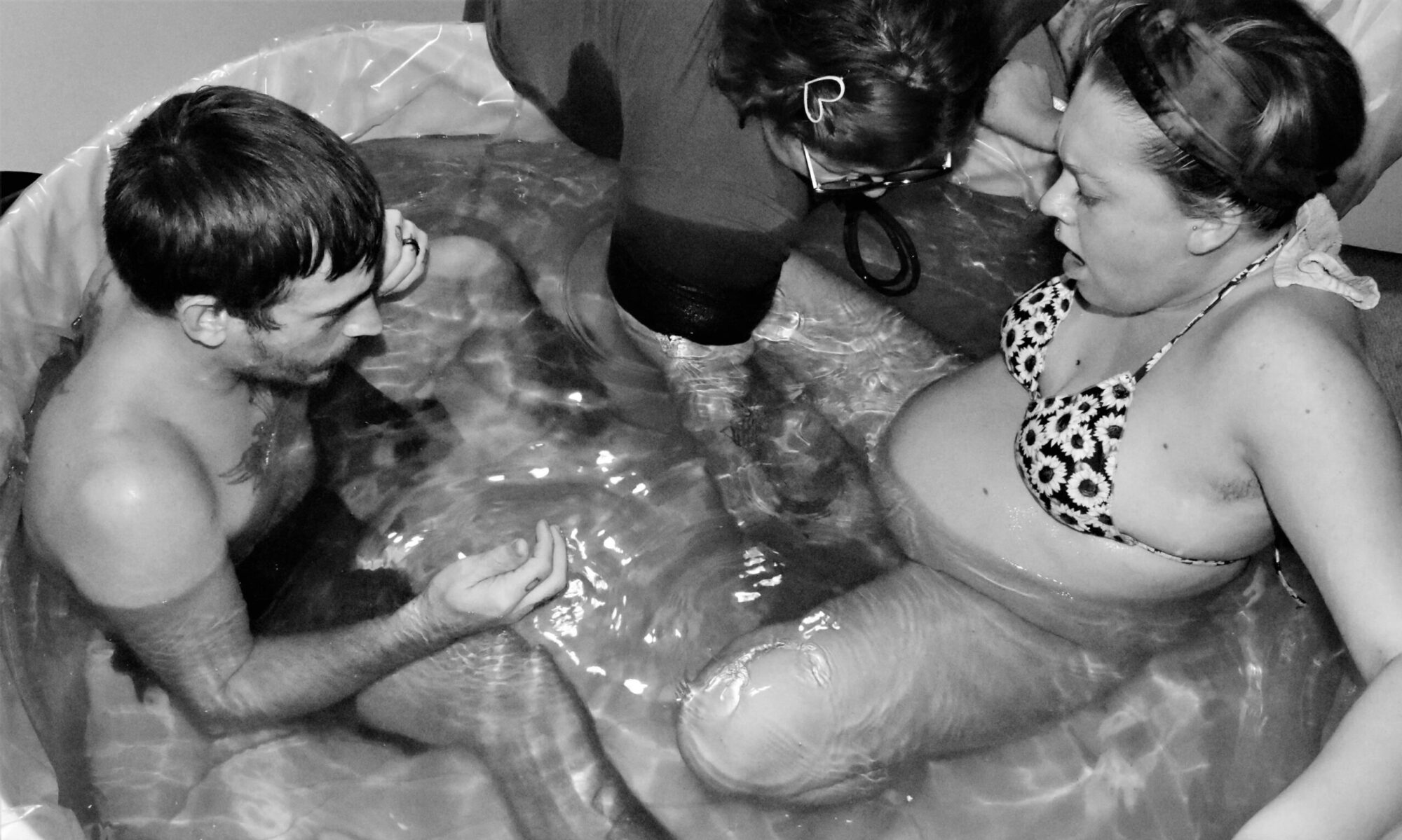
What HomeBirth (non – nurse) Midwives Do Not Do:
- Practice Medicine!
- Diagnose or Treat Conditions.
- Have prescriptive authority.
- Perform Amniotomy (Breaking bag of water) risks include; higher risk of infection, greater incidence of cord prolapse and decreased cushioning of baby’s head during birth. Another disadvantage is that most doctors and hospital protocols set a strict time limit that women are allowed to labor once the waters have broken (what up until recently was called “the 24 hour rule”).
- Interfere with normal labor and birth which may take anywhere from 2 hours to a few days.
- Use Pitocin or other drugs (including Cytotec) to induce or augment labor. The risks of inducing or augmenting labor include; Pitocin-induced contractions are abnormally and perhaps dangerously longer and stronger than those that occur during spontaneous labor. There is no gradual build up, peak and back off in pitocin-induced contractions. Pitocin can exhaust the uterus, making pushing less effective. Perhaps the most dangerous complication of pitocin is uterine rupture! It is also believed to increase the pressure on the baby’s head with the artificially strong contractions.
- Use continuous electronic fetal monitoring (EFM) ~ Monitoring often leads to partial or total restriction of movement which can domino into more pain due to lack of freedom to assume a better position and/or trouble with the baby descending properly, which is often aided by movement. Use of continuous EFM during labor has not been shown to improve outcomes when compared with intermittent auscultation with fetoscope or hand held Doppler.
- Offer medications for pain relief like Epidurals, which can lower the mother’s blood pressure too much, which decreases the amount of oxygen for the baby, increasing the risk of fetal distress. Often the mothers temperature rises and can lead to hyperthermia of the baby in which case a full workup after the birth is usually ordered to rule out infection, and that often includes a spinal tap. Also, although an attempt is made to time the epidural right so that it can wear off so the mother can feel pushing, it is tricky and often unsuccessful. Pushing while anesthetized not only makes pushing less effective, it robs the mother of urge to push (which as opposed to full dilation) should be what dictates when pushing begins. It also makes the perineal and vaginal muscles slack and unable to turn the baby after the birth of the head, and sometimes results in sexual dysfunction weeks and months later. Use of drugs in labor like epidurals increases the family’s chance of needing a cesarean section.
- Routinely offer internal exams late in pregnancy.
- Cut Episiotomies which increase the risk of major tears and usually require many more stitches than a natural tear. Episiotomies have a higher rate of infection and a higher rate of serious complications. Fourth degree tears (where there is tearing through the rectal wall) are most often caused by cutting, can cause loss of orgasmic ability and loss or lessening of bowel control). Most Midwives suture less than 20%of the time and in homebirth settings it is mostly minor tear repairs.
- Tell a Mother where, how and in what position she must push ~ Between full dilation and actually feeling the urge to push there is often a resting phase. Telling a woman when she must push, especially if she does not feel the urge, can lead to many problems. Breath-holding can lead to lowered umbilical artery pH, abnormal changes in fetal heart rate and lower Apgar scores. (suggested reading: “The medicalization of the second state of labor by Marion Toepke McLean, CNM and “Renewing our faith in second stage” by Maryri Sagady, RN both from Midwifery Today Spring 1995, No. 33)
- Use coached Pushing or Make Mom lie flat on her back during labor or pushing. This is physically bad for baby because it restricts blood flow to the pelvic region, reducing or cutting off the baby’s oxygen supply and has been shown to be associated with fetal distress. It also makes the pelvis smaller (in part by pushing the tailbone forward) creating a “need” for assistance (i.e. forceps, vacuum extractor, episiotomies.)
- Use forceps or vacuum extractors that are not safe in a homebirth environment.
- Withhold Food and drink from a laboring woman.
- Have hospital privileges.
- Care for women outside the childbearing years. Providing reproductive maternal care during; pre-conception, pregnancy, labor, birth immediate and through the first 6 week postpartum period. Providing normal newborn care from immediate postpartum through the first 6 weeks.
